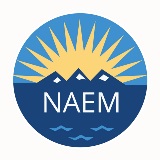How Biogen Idec Inc. Uses Materiality Assessments Identify Risks, Priorities

Q: To set the table, could you tell us when Biogen launched a formal sustainability program?
A: It's quite clear to us when and why we formalized our sustainability program. Early in 2008 one of our top five institutional investors sent us a questionnaire with several questions revolving around energy use, waste to landfill, water use, greenhouse gas emissions and our potential use of toxic materials. Just because of who was asking the question—and I think it's quite relevant here—we took a lot of care to get the information, which was no easy task! Once we provided it to our investor, they came back to us a number of months afterwards and said, 'You know what? You're actually doing pretty well! You should consider reporting externally on what you're doing.' And we said to ourselves 'We're going to continue to get a lot of these requests so let's formalize the data collection process and get some additional value out of that.' Our first Corporate Citizenship Report was published in 2010 based on 2009 data. We are now working on our fifth annual report which will be out in early June.
Q: When you published your first Citizenship report, had you done a materiality assessment, whether it was formal or informal? How did you approach the process of prioritizing your efforts in the beginning?
A: Risk assessments are a very common term in the traditional field of EHS management, where we are used to dealing with a matrix, measuring probability in one axis and consequence in the other. We would then prioritize our efforts on those potential events with high probability and impact. A materiality assessment follows the same concept. On one axis we ask 'How important is the aspect in question to the external community?' and in the other one we ask 'How important is it to us?' So if you're speaking about an issue that's of significant importance to the external community and also to us, then it should be prioritized from a resource-allocation point of view. Conversely, if it's not critical to either, then it would be de-prioritized. So yes, one of the first steps we took early in 2009 was to conduct a formal materiality assessment. We researched the available literature, other companies in our space, we talked to key stakeholders, and our first materiality assessment was born.
Q: And was that used primarily to set strategy or for the purposes of external reporting? Or a little bit of both?
A: At first we didn't think of it as something to set strategy, although it is now used to inform our strategy. In general, what we find after going through the process is that the key issues it highlights are well known and our strategy covers them. But we also find that it may actually help us de-prioritize some aspects of our overall strategy due to increased clarity specific to the connection between stakeholder and company needs. That's where the materiality assessment really helps. It helps confirm that you're working on the right things and potentially de-prioritize activities as well.
Q: How do you typically conduct your assessments? Do you do them internally or do you work with external consultants?
A: We use external consultants to shepherd us through the process—scheduling the conference calls, conducting the interviews and managing the statistical effort around the assessment. That said, we are the ones who know the industry, the key players, and what's important to the company, so even though we work with consultants, the process is owned by us.
Q: Do you think the materiality assessment helps ensure that your sustainability report will be well-received?
A: Absolutely. Without it, you would almost be saying, 'Trust us. We are working on and communicating what's important.' I don't think one can avoid doing the materiality assessment. You need the formality that the materiality assessment forces you to go through.
Topics:
Metrics & Reporting Sustainability
About the Author

NAEM Staff
The National Association for Environmental, Health and Safety, and Sustainability (EHS&S) Management (NAEM) empowers corporate leaders to advance environmental stewardship, create safe and healthy workplaces and promote global sustainability. As the
leading business community for EHS&S decision-makers, we provide engaging forums, a curated network, peer benchmarking, research insights and tools for solving today’s corporate EHS&S management challenges. Visit us online at naem.org.

